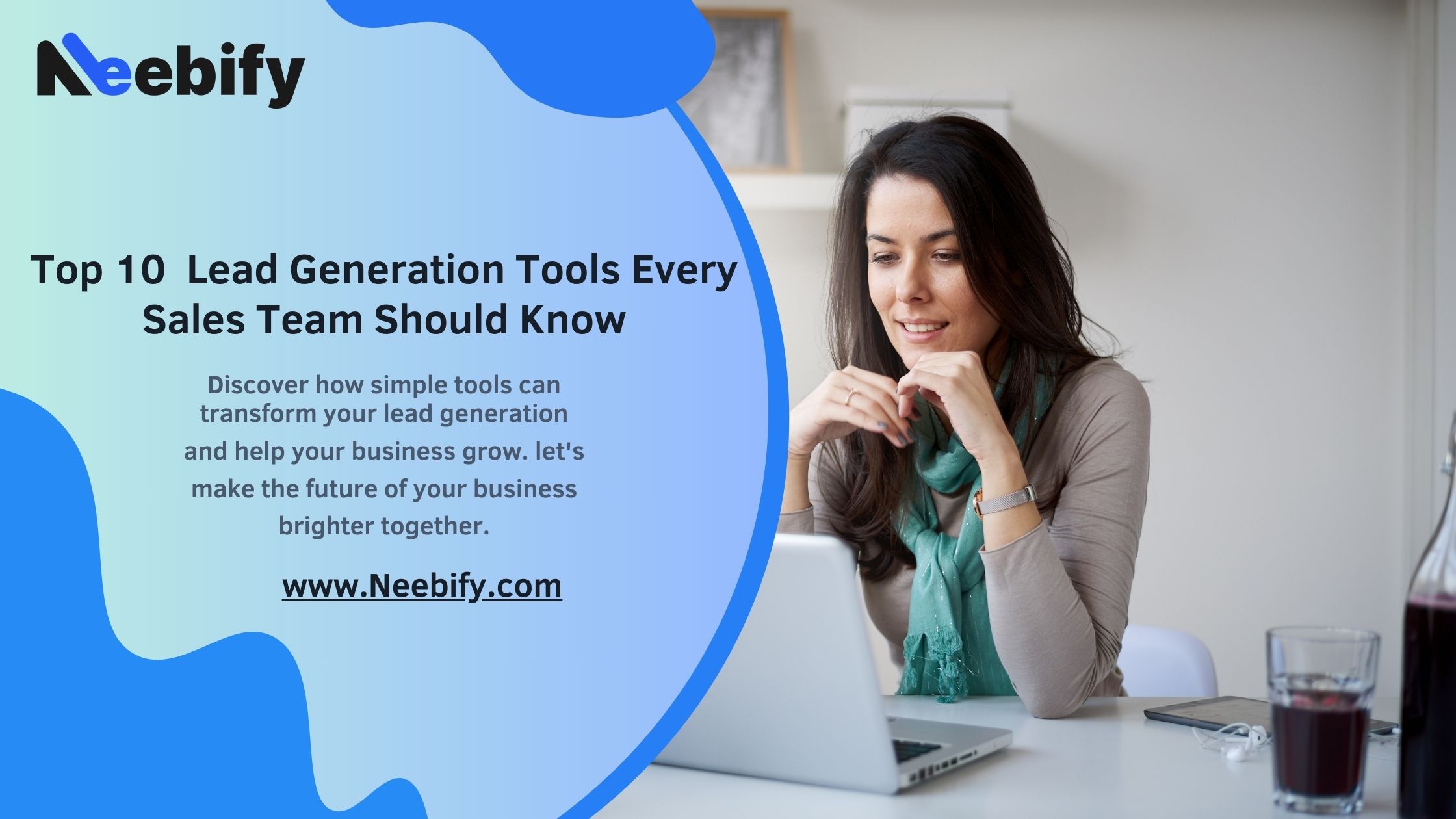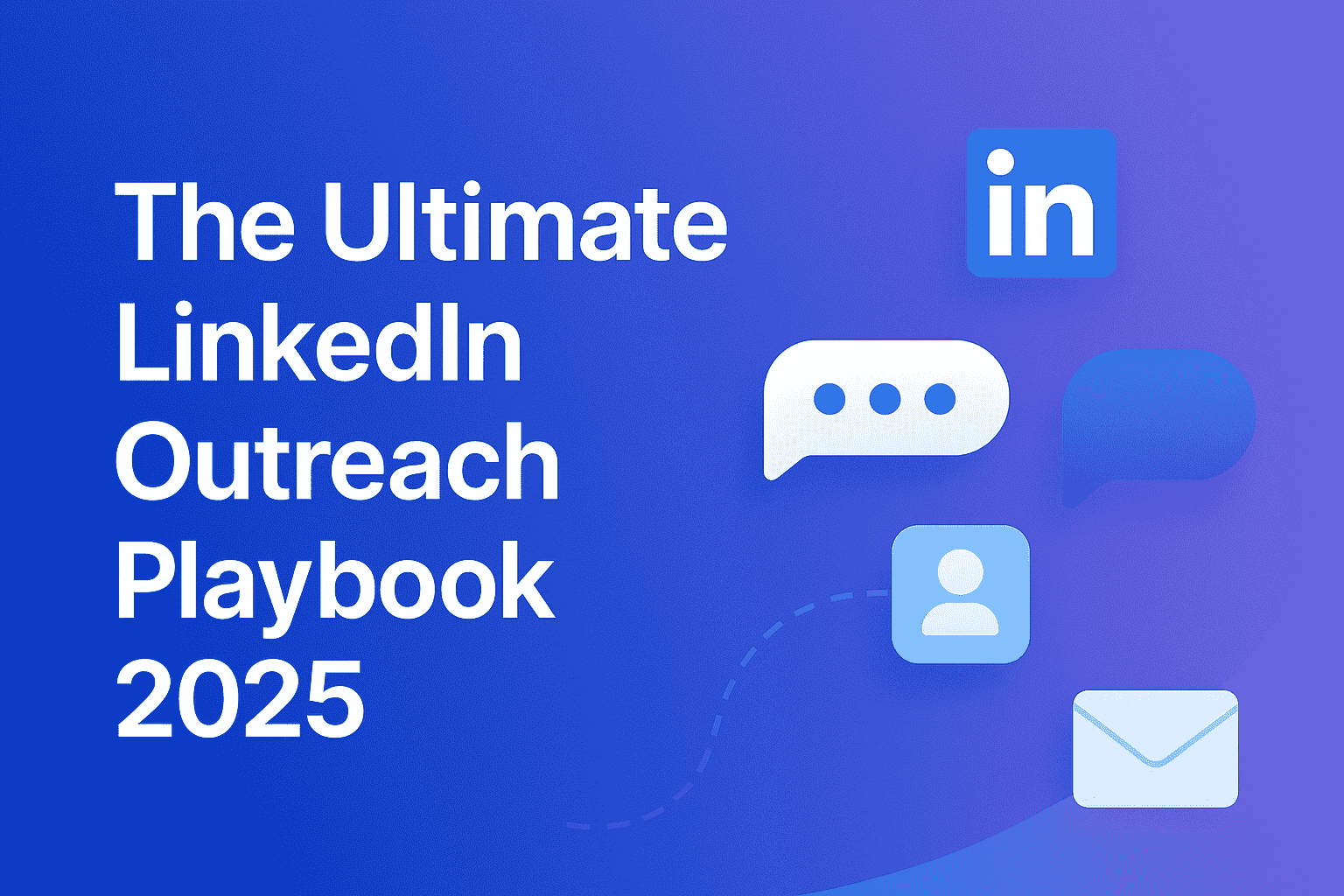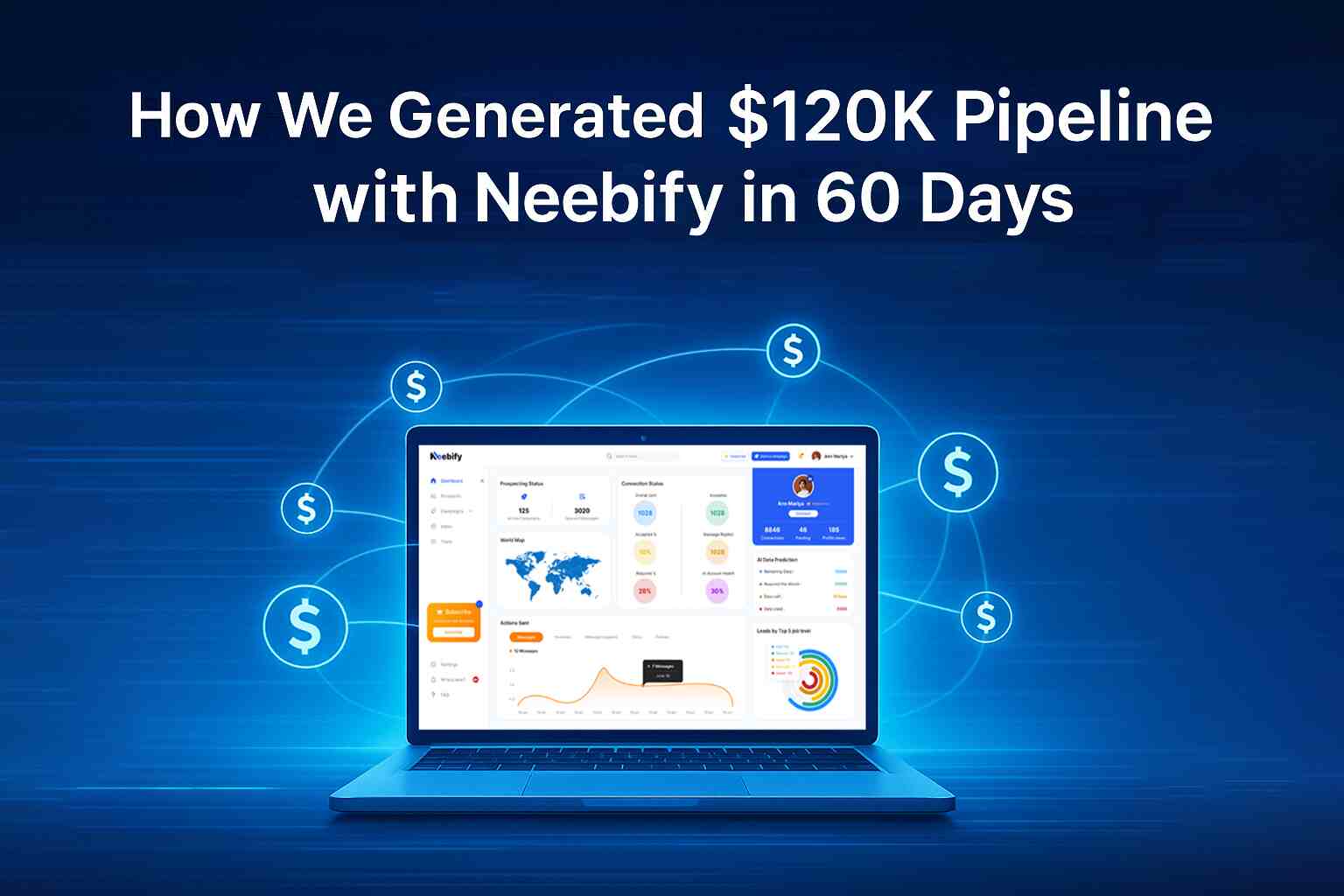Table of content
What is a Lead Generation Tool?
A lead generation tool is the software or technology that helps a business find and capture prospects or leads for its products or services. These tools are aimed to bring about streamlining and automation in the process of attraction, qualification, and conversion of leads into sales opportunities.
The lead generation tools typically contain a wide range of functions and features to support businesses in generating leads. It could be landing page builders, email marketing automation, and lead scoring with segmentation, among others.
Here are some essential steps for continuous Lead Generation:
The B2B Sales Process Explanation
Sales process steps are for businesses. Make a sequence of steps of a possibility. The steps will lead to the conversion of possibility into a customer. Since there are usually several decision-makers and influencers involved in the B2B selling process, it is a more tedious, more complicated, and rigorous process than the B2C selling process. Surviving in such a market would call for knowledge of the B2B sales process.
Identifying Potential Customers
The first step in prospecting is to identify customers through market research, industry trends, or any other communication with firms that might benefit from your product or service. Potential customers are identified, leads are generated by gathering contact information and potentially contacting, and people are contacted at decision-making positions.
Qualification of Leads
After the generation of leads comes lead qualification. This, in essence, is the process of determining if this lead is a good fit for your product or service and if they have the budget to buy and authority to buy. Phone or email communication to discuss their needs or scheduling a meeting to discuss their needs and how your offering can help them are ways to qualify leads.
Presenting the Product/ Service
This may include product demos, proposals, or an elaborate explanation of how your product will help solve their problem. At this stage, the requirements are to be persuasive, informative, and transparent to achieve trust and credibility.
Negotiation of Sale Terms
If the customer indicates interest, agree on terms of sale, including price and payment, or other agreements which should be settled first prior to sale.
Closing the Sale
The last stage of selling pertains to how the sale is finally closed. This is done through commitment from the buyer and formalizing the agreement by completing the necessary documents to conclude the sale.
Types Of Lead Generation Tools
There are several types of lead generation tools that businesses can use to find and attract potential customers. The use of a mix of the correct tools will surely help businesses find and engage potential customers effectively. This relationship of trust-building might generate leads to increase sales and revenue. These are the common types include:
Social Media Tools: These are tools that help the business find and connect with potential customers in social media sites like LinkedIn, Twitter, and Facebook.
Email Marketing Tools: The use of such tools enables businesses to send personalized, targeted emails to potential customers and track their interaction with the provided content.
Content Marketing Tools: Breakthrough tools that help create up-to-date valuable content, for example, blog posts, e-books, and webinars, that drives potential customers and generates leads.
Landing Page and Form Builders: It is these tools which make it extremely easy for businesses to create custom landing pages and forms helpful in capturing information of potential customers, enabling them to convert into leads.
SEO Tools: Tools enable small businesses to optimize the website and its content for visibility with searches that are made on leading search engines.
Event and Webinar Tools: Enable businesses to create captivating events and webinars to attract leads and provide them with engagement and lead generation activities.
Sales Intelligence and Data Enrichment: Provides businesses with important information on their potential customers that facilitate better personalization of outreach and builds better lead generation. It provides the contact details, company size, and industries.
How Can We Choose the Right Lead Generation Tool?
At the time of selecting the lead generation tools, a number of parameters will help you choose the right set of tools for business needs. Following are some of the key factors which can be considered:
Business Goals: Define your business goals and your desired outcome of your lead generation activity. It helps you identify the tools that best support your objectives.
Budget: Set a budget for the lead generation tool costs and factor in any tool that seems interesting. Not all tools are free, and some might have periodic fees or additional costs for add-ons or integrations.
Integration: Look for tools that integrate well with pre-existing systems or processes, such as a CRM or marketing automation platform.
Usability: Think about how easy and intuitive it is for users to handle every tool. Also, think if any member of your team will need long and complex training for their proper functioning.
Accuracy and Security: Make sure the tools you have selected provide the accuracy of data and security. Customer information must be protected with strong security.
Support and Customer Service: Find tools that have excellent customer support and resources, such as tutorials, training, and strong customer service.
10 Leading B2B Lead Generation Tools in B2B Sales
1. LinkedIn Sales Navigator
LinkedIn Sales Navigator is a B2B sales tool that opens access for sales teams to LinkedIn's professional network. This tool helps find potential customers, connect with them, keep up to date with industry news, and get insights to improve sales strategies.
Key Features:
Advanced search allows for searching pools on location, job title, and industry criteria.
This method provides LinkedIn Sales Navigator with personalized recommendations of potential customers based on their activity and interests.
Through the account insights feature, it also provides updates and insights relating to the potential customer's company, such as news and any financial information.
One can further use this avenue to send real-time messages to a potential customer even when they are not linked on LinkedIn .
2. Salesforce
This is a cloud-based CRM software solution with an aspiration of at all times assisting businesses in managing entries on sales, marketing, and the efforts of service to customers.
Key Features:
Leads and opportunity management: Allows tracking and management from lead to close.
Marketing automation: Allows designing and delivery of targeted campaigns as well as tracking performance.
Customer service and support: Managing customer inquiries and support tickets.
Analytics and reporting: Obtain insights into your sales and marketing performance to make informed decisions.
3. Leads API
The Leads API, offered by Crawlbase, is an amazing lead-generation and data enrichment tool that operates from the cloud. It is used to help businesses find and enrich contact and company data from multiple sources. Businesses can use the offered REST API and easily integrate lead generation and data enrichment in workflows and applications.
The reason it is one of the famous tools among businesses for the extraction and enrichment of company and contact data from different sources is that it is one of the very powerful sources of leads that give B2B sales companies a run for their money.
Key Features:
Businesses could get much information about companies and contacts—like name, job title, email address, phone number, social media profiles, and other important details.
It allows one to tailor their search criteria by industry, job title, location, and other factors, which may be of great assistance in narrowing down the search results and creating highly-accurate leads.
It can enrich and update existing contact and company data with real-time information, ensuring that the data is always current and accurate.
Integrate this tool with your already existent and popular CRM and marketing automation platforms to transfer leads and associated lead data seamlessly. It has flexible pricing plans with good, affordable features, so it provides a cost-effective way for generating leads on a budget.
This B2B selling tool has a REST API that will allow for easy integration with custom applications, thus, businesses will be able to build their lead generation solutions.
4. HubSpot
Among other tools meant for business-to-business sales and marketing is the all-in-one business tool—HubSpot. The business tool comprises a wide array of functions designed for managing the sales process from A to Z. It is aimed at helping companies attract, engage, and delight customers with very powerful tools.
Key Features:
CRM services provide one central database where the customer data can be stored and managed.
Through Automation the marketing allows users to put up with email campaigns and landing pages to attract potential customers.
The sales automation provided by HubSpot helps keep work flowing smoothly. This includes automated tools for sale, ranging from lead qualification to appointment scheduling.
It offers insights on the sales and marketing performances, which include traffics from the website and open rates from emails
5. Hunter.io
Hunter.io is One of the most popular B2B sales tools in use, Hunter.io is used to locate and verify the email addresses of possible prospects (possible future leads). Their database also is inclusive of all the contact information of possible customers, their job titles, social media links, and company information. All this may spare potential hours per week by substituting manual research attempts of sales teams with something more critical.
Key Features:
This tool can be used to find all email addresses that belong to a particular domain name.
Hunter.io validates the deliverability of email addresses and flags them as invalid.
It discovers social media profiles, job titles, and other related information of your potential prospects.
You can create and manage email outreach campaigns where emails are hit directly to your potential customers.
6. ZoomInfo
The Zoominfo is another business-to-business data provider that retains access to companies' business details, including their profile and contact information, and the news related to company happenings.
Key Features:
Advanced filter search that allows you to pinpoint the exact companies and people you're looking for
Data enrichment for companies and contacts, which gives an extra layer of data to elicit real insights on your prospects
Updated real-time information for data accuracy and currency
Sales intelligence and analytics to make informed, data-driven decisions and spot opportunities offering high value
7. Clearbit
Clearbit is a B2B data provider with an API and suite of software used to improve sales and marketing efforts.
Key Features:
Enrich leads to get more information and insights on prospects, enabling more tailored outreach and driving more conversations.
Prospect the ICP: Continue identifying new contacts and accounts that match your ideal buyer profile.
(Account-Based Marketing) ABM tools enable a business to run targeted campaigns with an ability to engage with key decision-makers of the key accounts identified.
Maintain real-time updated information about all prospects you are dealing with.
8. AeroLeads
AeroLeads is a B2B lead generation platform designed to help businesses find the contact information of professionals as well as prospect data to boost marketing and sales outreach.
Key Features:
Contact and account discovery: Find new prospects and accounts based on your ideal customer profile
Enrich contact and company data: Get more information on who you're selling to and how to personalize outreach to drive better engagement
Verification of leads: assure that the contact information you have is current and up to date
Real-time updates on data: this ensures that the data on any prospect is kept up to date and current
9. Hootsuite
Hootsuite works with the help of a business API which is used to manage and analyze social media presence of the business.
Key Features:
Schedule and publish to Social Media, which allows Social Media marketers the ability to create and schedule messaging across numerous social networking sites
Social media monitoring and Social engagement features which allows one to effectively track online brand mentions and engage with followers in real-time
Social media analytics and Social Reporting; that give insight to social returns and socially attributed revenue
Team collaboration and workflow management: Assign tasks and make workflows smooth in your social media processes.
10. Lead Forensics
Lead Forensics is a B2B lead generation methodology and website visitor tracking tool. It helps businesses to identify and capture leads out of their website traffic.
Key Features:
Identify website visitors to identify which companies are visiting your website and to see what they are looking at.
Highlights of the key features include: Lead capture and enrichment: Allows you to capture contact information and enrich it with additional information to help you tailor your outreach.
Lead ranking and scoring: enable to prioritize the most promising prospects led by their behavior and engagement
Real-time alerts or notifications: enables your sales team to respond quickly to hot leads and opportunities.
Best practices in using lead generation tools efficiently
Leading potential customers into the sales funnel and conversion to become customers is all possible with the ideal lead generation tool. However, a few practices have to be mastered in order to attain maximal potential. Here are some best practices:
Define Your Target Audience: Any lead generation tool shall be based on the very understanding of your target audience. This supports the selection of the right tool to frame the right messages for luring the leads.
Keep Up with Your Leads: Work with your leads through your CRM where you can formally have them centralized. That way, you're better managing, maintaining, and ensuring that your leads are advancing through the funnel efficiently.
Make the approach more personal: Use the information at your disposal to personalize your message and your approach to potential customers by showing how your product fits their needs and pain points. This way, your customers will find your product interesting.
Immediate Follow-Up: When a lead shows interest in our product or service, always follow up as soon as possible so that conversation starts and does not die. There is nothing worse than losing them at this place as another solution probably interested them before we do.
Continually Monitor, Measure, and Optimize: Monitor, measure, and continuously optimize your lead generation efforts for the best performance. Gauge progress through analytics and reporting tools to tweak your experience.
Conclusion
Today, lead generation tools have become an integral part of ensuring a business's success. In this contemporary business scenario, it is quite possible to automate the whole process of finding, qualifying, and nurturing by means of lead generation tools in such a way that makes the business's selling smooth and promises greatest growth.
But take note: however strong these lead generation tools are, they aren't a magic solution. As strong as the tactics may be, the effectiveness of these tools largely depends on the strategy put in place, and these need to be optimized and tuned up time and time again to get the most results.
With a strong cognitive approach toward the customer in producing quality content, the wielding power of data, and analytics lays down a path where one can effectively leverage the tools of lead generation to reach and convert target customers.
With technology continuing to advance, it will stay exciting to see how lead-generation tools will keep changing and developing into more effective solutions for business success.
Get your next meeting in a
matter of minutes.
Free Trial
Latest
The Ultimate LinkedIn Outreach Playbook 2025
A practical, modern guide to mastering LinkedIn outreach in 2025 — learn how to boost reply rates, p
12/1/2025How to Find 100 ICP Leads Without LinkedIn Sales Navigator
Generating 100 targeted ICP leads doesn’t require LinkedIn Sales Navigator. Learn how to leverage fr
11/28/2025


